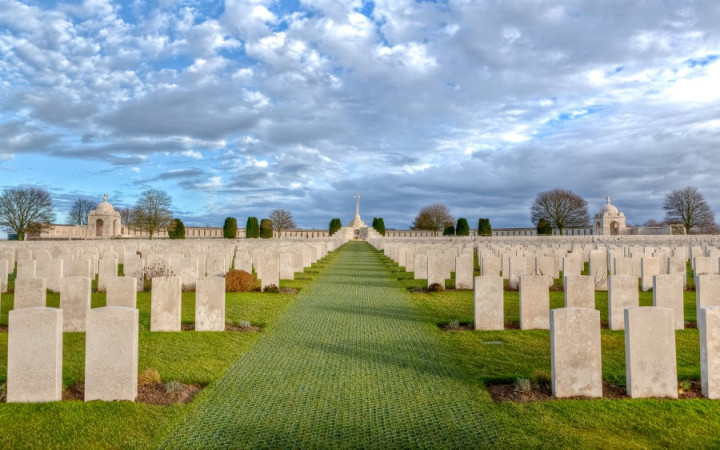Today’s Wonder of the Day was inspired by Steven. Steven Wonders, “What was World War 1 about?” Thanks for WONDERing with us, Steven!
Today, much of the world lives in relative peace. Of course, there are armed conflicts in many places around the globe. But most modern people have not lived through times of great worldwide fighting.
That was certainly not the case a century ago. The early 20th century was marked by a global dispute. In fact, it was so widespread and devastating that it became known as the Great War.
The war we’re talking about is World War I, of course. Back then, however, no one expected there ever to be a World War II. In fact, the Great War was often known as the War to End All Wars.
How did the Great War begin? It was preceded by foreign policy disputes among the major powers of the world. Many nations began to increase their military strength and form alliances. Quickly, tensions rose around the world. Then, on June 28, 1914, an event occurred that would spark the start of the Great War. That’s the day Archduke Franz Ferdinand of Austria was assassinated by a Serbian terrorist group.
Soon after, Austria-Hungary declared war on Serbia. But, of course, it didn’t stop there. Austria-Hungary was supported by its ally, Germany. On the other side, Russia came to Serbia’s aid. It didn’t take long for treaties and alliances to draw many nations into the fight.
Europe was quickly divided. On one side was the Triple Alliance of Germany, Austria-Hungary, and Italy. They were at war with the Triple Entente of Russia, France, and Great Britain. As other countries joined sides in the war, the Triple Alliance became known as the Central Powers. The Triple Entente became known as the Allied Forces.
The Great War turned quite bloody. It was mainly fought along two long fronts in eastern and western Europe. Many new types of war technology were introduced during World War I, including tanks and airplanes. Still, most of the fighting took place between soldiers in deep trenches dug into the ground.
Trench warfare was brutal. Soldiers sometimes spent days and weeks in the trenches. They continually faced death from opposing guns, grenades, and artillery fire. They also suffered diseases and infections, such as Trench Fever and Trench Foot.
In the trenches, troops mounted attacks on the opposing side by trying to cross the section of land between the trenches. They called this place “No Man’s Land.” Unfortunately, these soldiers out in the open were easily cut down by opposing fire.
The Great War led to an astounding number of deaths. Still, there was little ground won or lost during the entirety of the war. Historians estimate more than 15 million people died. Over 20 million were wounded. To put that in perspective, it’s an average of over 6,500 deaths every day of the war.
The United States entered the war in 1917 on the side of the Allied Forces. With fresh troops on their side, the Allied Forces soon had the Central Powers in retreat. Germany called for a cease-fire on October 3, 1918. Fighting finally stopped with the signing of an Armistice on the 11th hour of the 11th day of the 11th month: November 11, 1918, at 11am.
The war officially ended in 1919. Those involved signed a peace treaty called the Treaty of Versailles. The treaty also established the League of Nations to prevent such wars from occurring in the future. Sadly, the terms of the treaty ended up laying the groundwork for World War II. It would end up being even more widespread and devastating than the Great War.
Standards: C3.D2.His.2, CCRA.L.3, CCRA.L.6, CCRA.R.1, CCRA.R.2, CCRA.R.4, CCRA.R.10, CCRA.SL.1, CCRA.W.4, CCRA.W.7











Dorian
jayden connors
James
mj
MJ
AiDaN
Wonder Friend
Jack
JamistJA23
GrantIA24
Antelope
Holt
Brady
Holt
Jason
Peyton
Hiter
Hiter
Patrick Bury
gary
tristan
nicolas
kayla
Ian W.
cam
Tucker
Tucker
sahaj
levi
polishguy